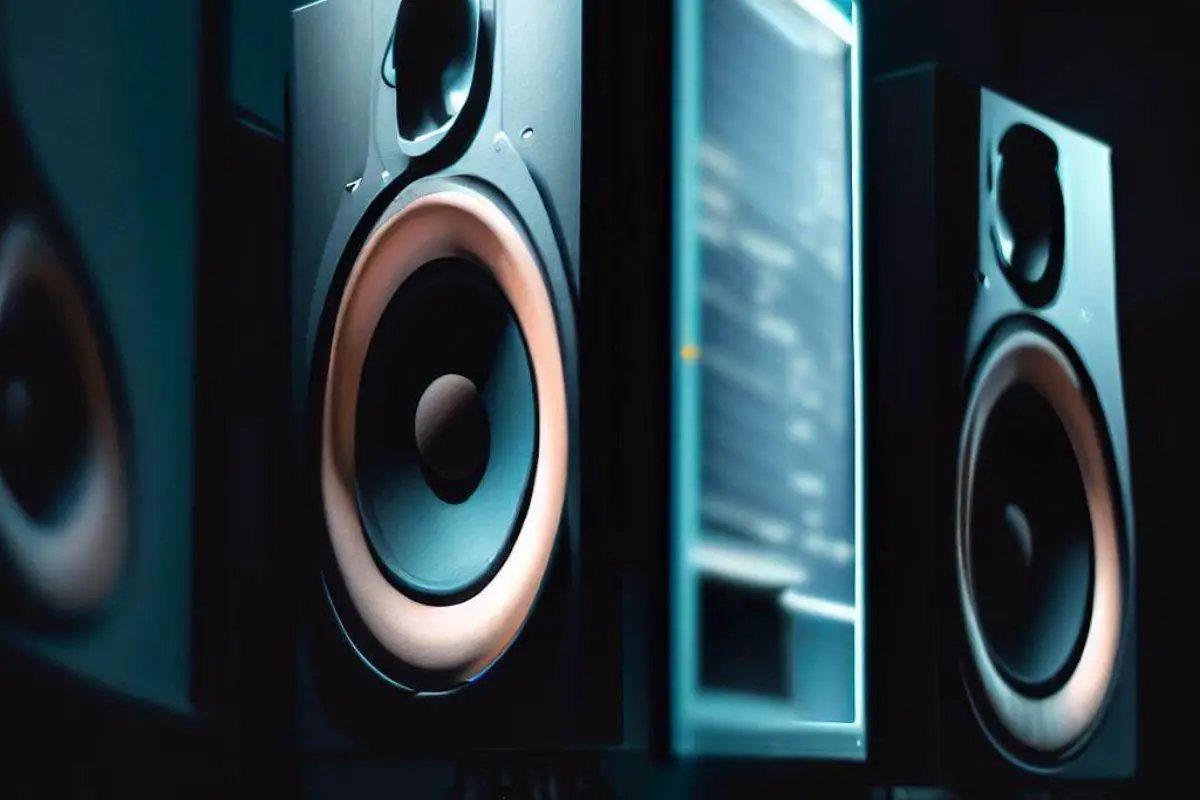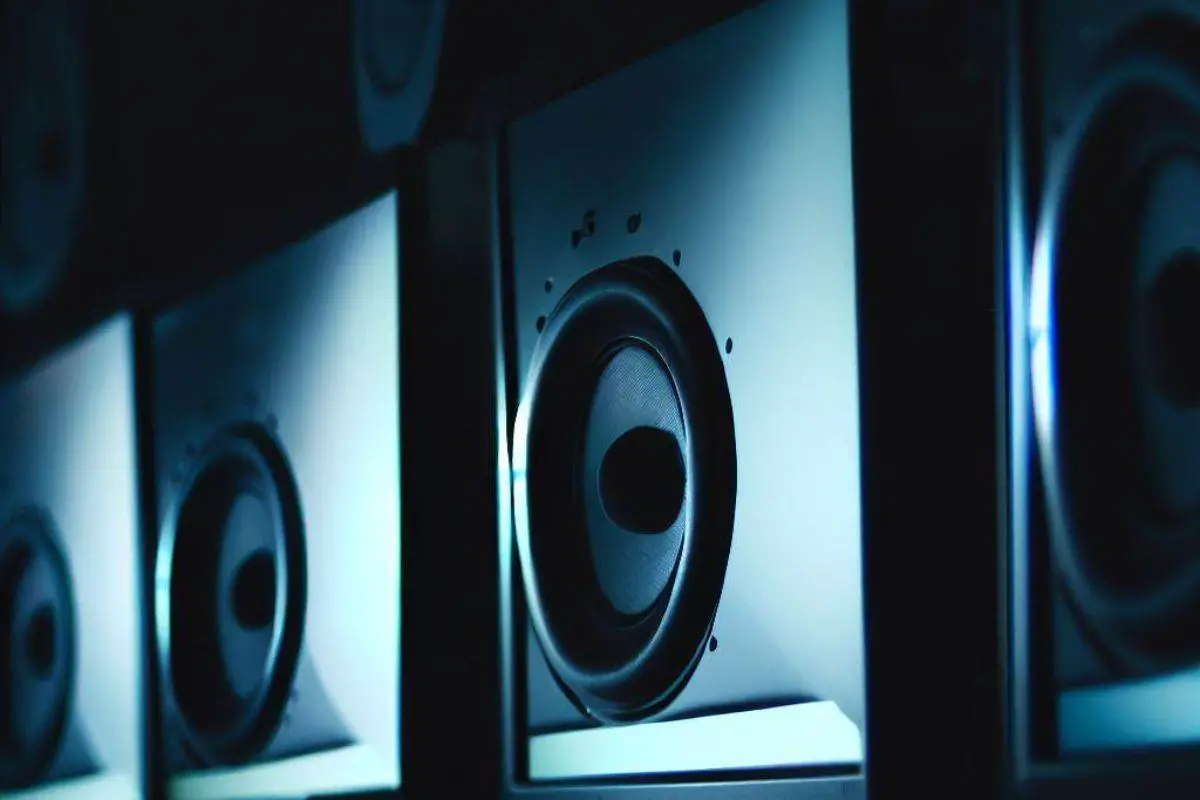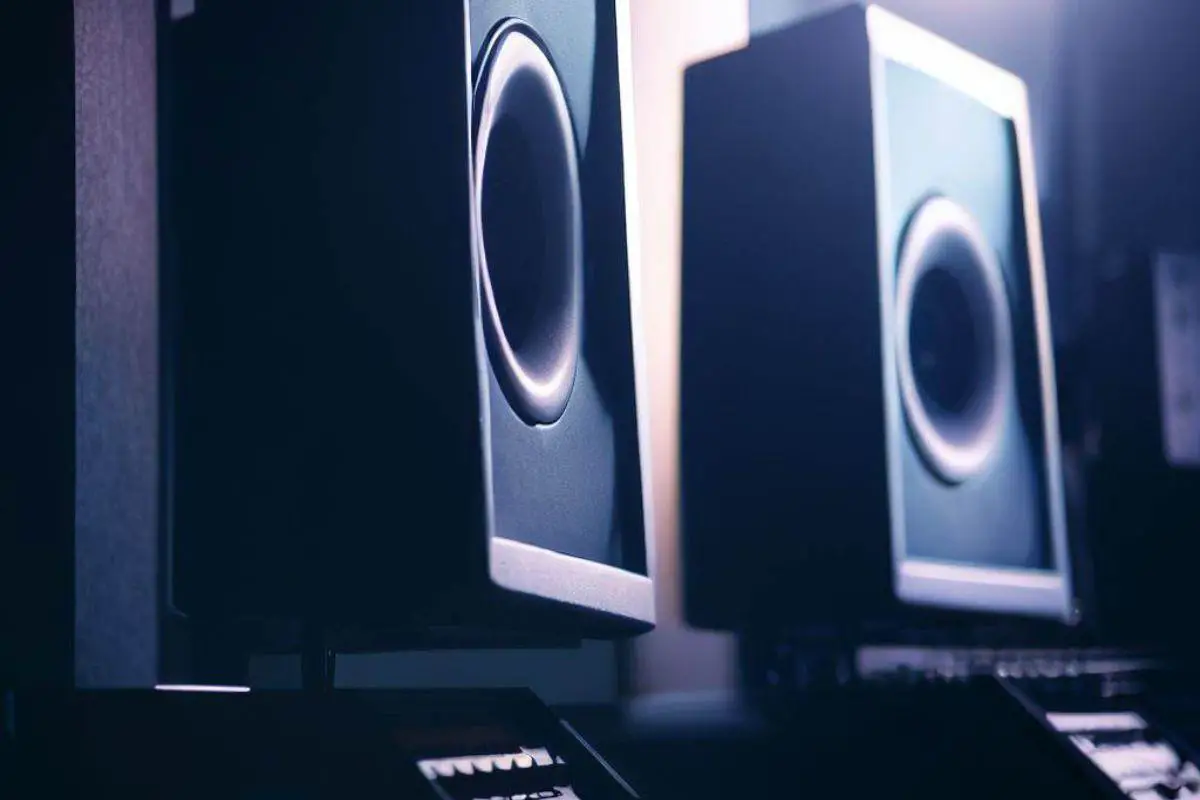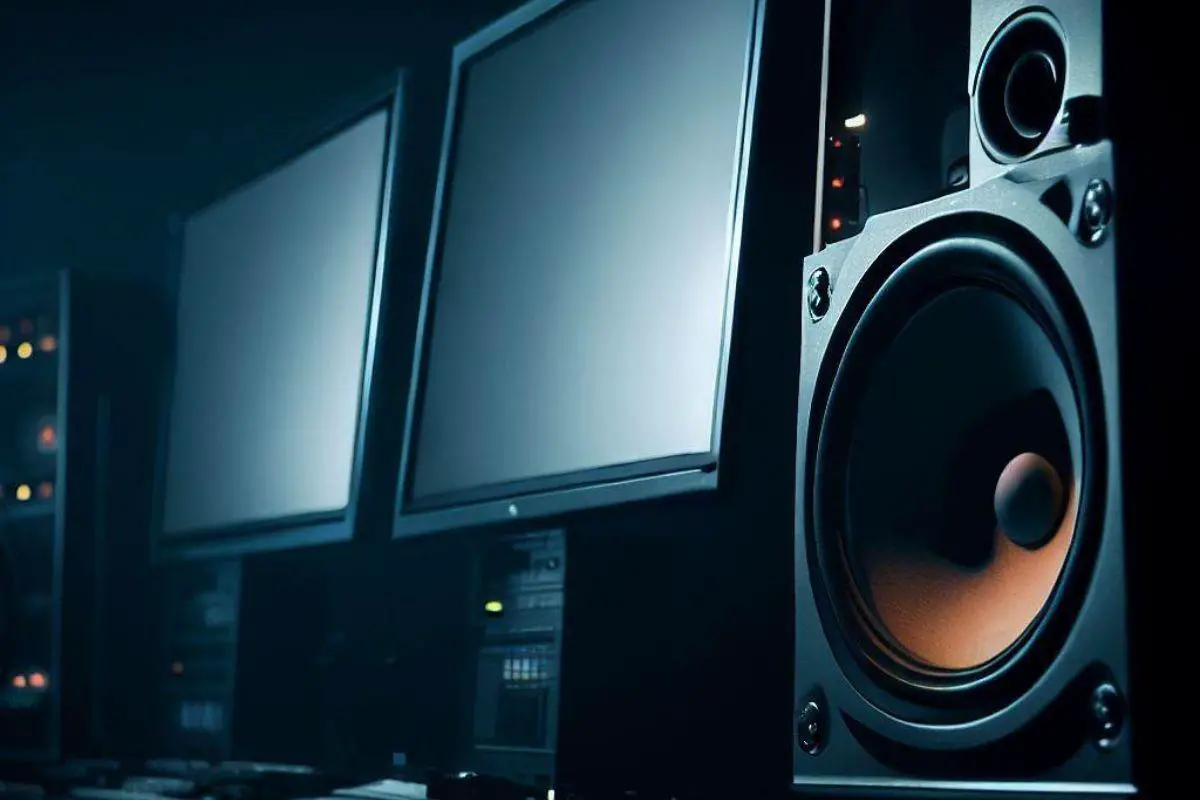I’ve got a question that’s been on my mind lately – are studio monitors good for listening to music at home? Not just for professionals to use in the studio, but for average folks who just love tunes.
This topic has come up a lot in audiophile circles recently. Studio monitors have traditionally been tools for audio engineers and producers. But some everyday music lovers have started using these studio-grade speakers for recreational listening.
The big draw is the accuracy and neutral sound that studio monitors are known for. They don’t color or hype the sound like many regular speakers. You hear the music exactly as the artist intended it, flaws and all.
But does this clinical precision make for an enjoyable listening experience with your favorite albums? Or are studio monitors too cold and analytical for casual music fans? That’s the debate I’ve been following with interest.
I’m planning to dive deeper into the merits of using studio monitors at home. Do the benefits of hearing recordings exactly as mixed outweigh the downsides? What challenges arise from bringing pro audio gear into your living room?
There’s definitely some appeal to that uncolored sound. But studio monitors also require extra effort to get right in a normal room. I want to explore this idea more. The question remains – are studio monitors good personal listening speakers or just for the production studio? Let’s find out!
Listening to Music at Its Best: Revisiting the Studio Monitor

Music has the power to move us in mysterious ways. A driving guitar riff gets the blood pumping. Emotive vocals give us chills. Deep bass makes the body sway. But are we hearing our favorite tracks as the artists intended? This question led me down a rabbit hole to discover the merits of studio monitors for music listening.
As a long-time music fanatic, I thought I had my home listening setup dialed in. A pair of vintage tower speakers I restored to gleaming glory. A warm tube amp to give that analog richness. Acoustic treatment panes are strategically placed around the room. Surely this was audio nirvana.
But I couldn’t shake the sense that I was missing some critical detail in the music I loved. A subtle nuance here. A touch too much bass bloat there. It was time to reconsider my listening philosophy.
After researching studio monitor positioning, room acoustics, and critical listening techniques, I took the plunge. Out went the old Hi-Fi gear, and in came a set of Entry Level Powered Studio Monitors with 6.5″ Kevlar Woofers. No more passive speakers and separates. These active monitors had everything built right in – amplification, crossovers, etc.
The studio monitors were placed precisely equidistant from my listening position, forming an equilateral triangle for optimal stereo imaging. Acoustic absorption and diffusion panels tamed reflections. Isolated monitor stands decoupled the speakers from the desk. Now the stage was set for some serious listening tests.
Are Studio Monitors Good for Listening To Music? The Pros of Studio Monitors
find out, I cued up a lossless music file and pressed play. The difference in sound quality was immediate. The nearfield studio monitors delivered sparkling highs and tighter lows. I was able to pick out subtle new details – like a guitar string squeak and backup vocal ad-libs – I had never heard on my old system.
It was remarkable how much more present and vivid music sounded on the studio monitors. Acoustic guitars had a crisp wooden resonance. Powerful drums hit with punchy impact. The vocals sounded intimate yet airy.
Compared to my vintage towers, the studio monitors lacked some of the exaggerated bass bloom that gave the music a “warm” sound. But this was a positive. I could hear the bass lines as intended by the artists and producers without the distracting boom and muddle.
The studio monitors’ accurate frequency response lived up to their reputation. I realized why audio engineers use similar models in recording studios to make mixing and mastering decisions. These speakers revealed music precisely as created, for better or worse.
Room for Improvement: Acoustic Treatment Challenges
Studio monitors are designed for acoustically treated rooms like production studios. In more lively domestic settings, their ultra-detailed sound can become grating. I discovered my small bedroom was causing some problems.
At moderate volumes, the audio was clean and balanced. But when turned up louder, a harsh brightness crept in, especially on vocals. The speakers were revealing every sonic flaw in my less-than-ideal room. Standing acoustic waves were wreaking havoc.
With some amateur room treatment efforts, I was able to tame the worst reflections. A rug on the hardwood floor, some foam panels in reflection zones, and a bass trap in the corner helped immensely. The monitors now maintained composure at higher volumes. Proper acoustic treatment is essential for the best performance.
Extended Listening: Can Studio Monitors Go the Distance?

So are studio monitors good for listening to music at home? How do ultra-accurate studio monitors hold up for longer listening sessions? Their uncolored sound is great for focused critical listening, but could fatigue set in over time?
Spinning some classic albums, I put the monitors through their paces. For familiar tracks, I kept picking out subtle new mixing details and instruments. The active monitors brought out the best in well-recorded music.
On poorer recordings, the speakers were merciless. Compressed mixes and shrill tones became grating quickly. The monitors’ transparency was a double-edged sword. However, a few tweaks to the EQ helped smooth out harsh tracks.
After a few hours of listening, my ears definitely needed a break. The studio monitors’ crisp highs could become tiring over time. Their clinical precision doesn’t lend itself to relaxing background listening. For critical listening in shorter sessions, however, the monitors performed brilliantly.
Tips for Using Studio Monitors for Music Listening
1. Proper placement
Properly setting up your studio monitors makes a huge difference in getting the best sound quality. You’ll want to carefully place them so they form an equal triangle shape with your listening position. This creates a centered stereo image. Experiment with angling them inward a bit too.
2. Acoustic treatment
Don’t just plop your monitors on a desk without thinking about sound reflections. Acoustic treatment like panels can help absorb first reflections and tame any ear-fatiguing brightness. Place panels at reflection points on walls and mix positions.
3. Use isolation pads or monitor stands
Get those speakers up off the desk if you can. Monitor stands decouple them from vibrations and let the sound properly develop. Isolation pads under the stands help further. Your monitors will sound so much cleaner.
4. Tune your monitors
Now let’s talk about tuning your monitors to the room. Grab some correction software to analyze your space and calibrate the speakers’ frequency response. It’s wild how much this can improve the sound in an untreated room. Suddenly everything is balanced.
5. Add a subwoofer
Don’t forget about the low end! Studio monitors can lack deep sub bass due to their smaller size. Adding a good subwoofer brings out those bottom octaves for full-range reproduction. Place it between the monitors and set the crossover carefully.
6. Invest in quality cables
Quality cables and interfaces reduce interference for clearer sound. Don’t run unbalanced cables over 10 feet if you can avoid it. Spend a bit more on solid connectors and shielding. It makes a difference.
7. Take breaks
Finally, don’t blast the monitors for too long. The accurate sound can fatigue your ears after a while. Take regular breaks to avoid burnout. Protect your hearing so you can enjoy music for years to come!
The Bottom Line: Studio Monitors for Musical Enjoyment

Are studio monitors good for listening to music? In the right environment, absolutely. They provide exceptional clarity, imaging, and frequency response. The accuracy can be revelatory with well-produced music. However, additional acoustic treatment is a must in most home settings.
Compared to audiophile Hi-Fi speakers, studio monitors sacrifice some warmth and bass slam. Subwoofers can help fill out the bottom end. Overall, studio monitors excel at helping understand music better. For critical listening, there are few substitutes.
That said, casual listening is better left to speakers designed primarily for musical enjoyment. Audiophile gear or even quality bookshelf speakers may provide a better overall listening experience. Still, every serious music lover should spend time with studio monitors to hear their collection as never before.
When searching for audio nirvana at home, there is no one-size-fits-all solution. But quality studio monitors can get us very close to hearing music as the artists intended – technical warts and all. For rediscovering favorite albums with fresh ears, studio monitors deliver an uncolored clarity that has to be heard to be believed.
Also read:
Studio Monitor Calibration in 9 Simple Steps
How to Set Up Studio Monitors Properly In 7 Steps
Best Powered Bookshelf Speakers Under 500 Revealed

Kenny Owen is an acclaimed audio expert and longtime enthusiast with a deep passion for sound technology. With over 15 years of experience in the car and home audio industry, Kenny has established himself as a trusted authority on everything from speaker setups and amplifier configurations to the latest audio equipment and innovations.
Through his engaging writing style and meticulously researched articles, Kenny shares his vast knowledge on optimizing audio systems for superior sound quality. He provides in-depth tips and tricks for achieving the best listening experience, whether it’s tuning a car’s audio system for an immersive musical journey or creating a high-fidelity home theater setup. Additionally, Kenny’s comprehensive buying guides empower readers to make informed decisions when investing in audio components, ensuring they get the most bang for their buck.

Kenny Owen is an acclaimed audio expert and longtime enthusiast with a deep passion for sound technology. With over 15 years of experience in the car and home audio industry, Kenny has established himself as a trusted authority on everything from speaker setups and amplifier configurations to the latest audio equipment and innovations.
Through his engaging writing style and meticulously researched articles, Kenny shares his vast knowledge on optimizing audio systems for superior sound quality. He provides in-depth tips and tricks for achieving the best listening experience, whether it’s tuning a car’s audio system for an immersive musical journey or creating a high-fidelity home theater setup. Additionally, Kenny’s comprehensive buying guides empower readers to make informed decisions when investing in audio components, ensuring they get the most bang for their buck.

